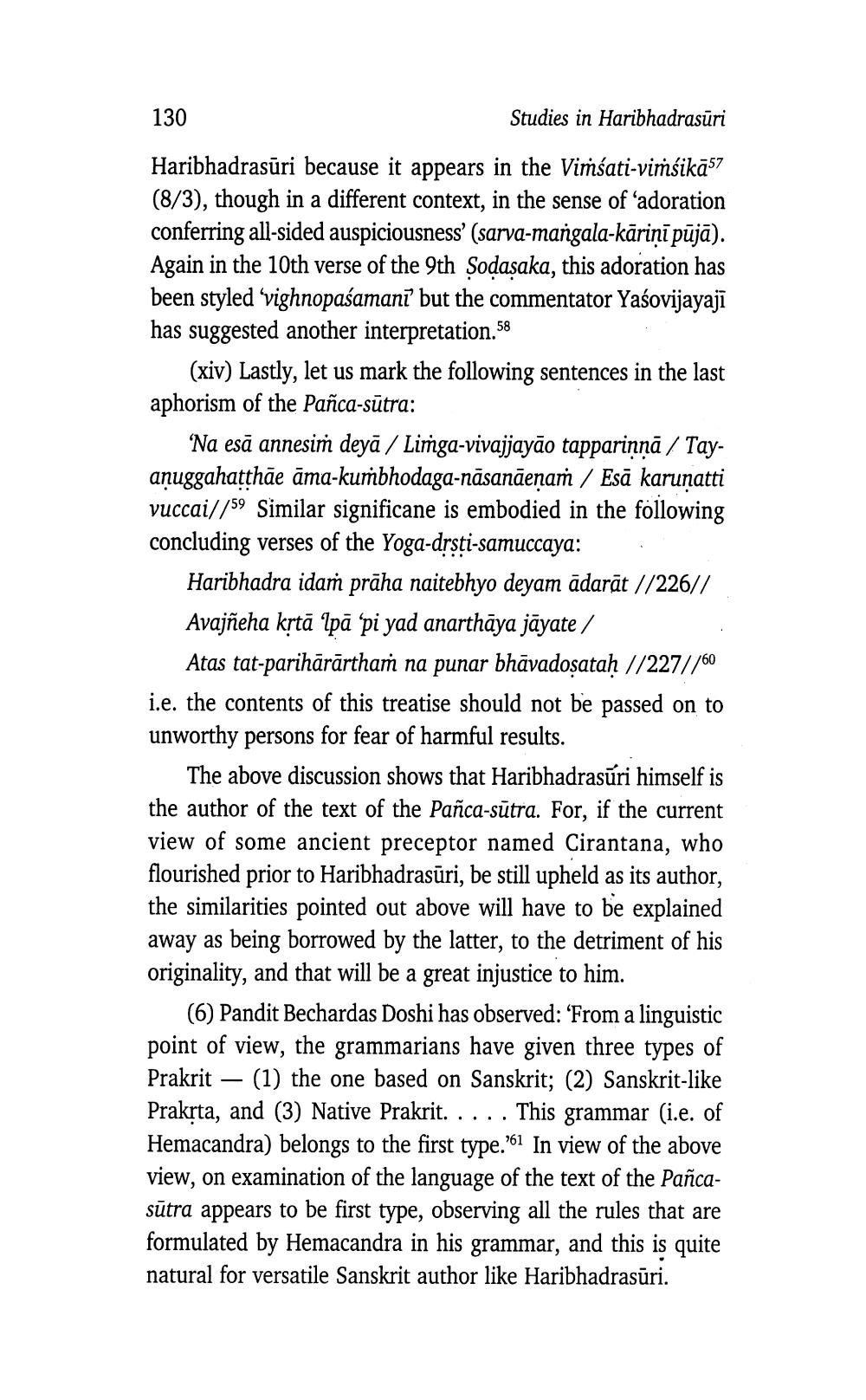________________
130
Studies in Haribhadrasuri
Haribhadrasūri because it appears in the Vimsati-viņšikā57 (8/3), though in a different context, in the sense of 'adoration conferring all-sided auspiciousness' (sarva-mangala-kāriņī pūjā). Again in the 10th verse of the 9th Sodasaka, this adoration has been styled vighnopaśamani' but the commentator Yaśovijayajī has suggested another interpretation.58
(xiv) Lastly, let us mark the following sentences in the last aphorism of the Pañca-sūtra:
Na esā annesim deyā / Limga-vivajjayão tapparinnā / Tayanuggahatthāe āma-kumbhodaga-nāsanāeņas / Esā karuņatti vuccai//59 Similar significane is embodied in the following concluding verses of the Yoga-drsti-samuccaya: i!
Haribhadra idaṁ prāha naitebhyo deyam ādarāt //226// Avajñeha krtā Ipā 'pi yad anarthāya jāyate /
Atas tat-parihārārthań na punar bhāvadosataḥ //227//60 i.e. the contents of this treatise should not be passed on to unworthy persons for fear of harmful results.
The above discussion shows that Haribhadrasűri himself is the author of the text of the Pañca-sūtra. For, if the current view of some ancient preceptor named Cirantana, who flourished prior to Haribhadrasūri, be still upheld as its author, the similarities pointed out above will have to be explained away as being borrowed by the latter, to the detriment of his originality, and that will be a great injustice to him.
(6) Pandit Bechardas Doshi has observed: “From a linguistic point of view, the grammarians have given three types of Prakrit – (1) the one based on Sanskrit; (2) Sanskrit-like Prakrta, and (3) Native Prakrit. .... This grammar (i.e. of Hemacandra) belongs to the first type.?61 In view of the above view, on examination of the language of the text of the Pañcasūtra appears to be first type, observing all the rules that are formulated by Hemacandra in his grammar, and this is quite natural for versatile Sanskrit author like Haribhadrasūri.




